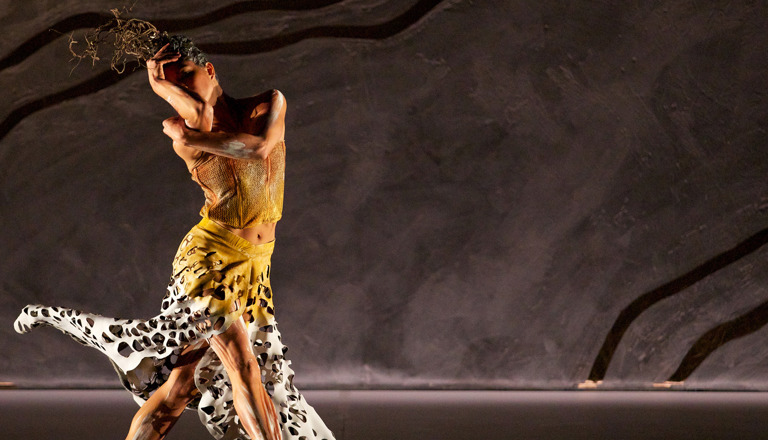Terrain (2012)
Next Steps
English / Year 7 – 10 / Language / Expressing and developing ideas
Transfer and apply information in one setting to enrich another.
- Write or find a story that describes losing and/or finding something precious.
- Use mime to describe the story through movement. Exaggerate and simplify the movements so that the gestures become easy to see.
- Explore different dynamics as you vary your movements and what you do with the imaginary object, for example, scoop the object into your hand, hold it tight, throw it in the air playfully, run to catch it, and/or swing it around.
English / Year 7 – 10 / Language / Expressing and developing ideas
Make dance sequences and experiment with a range of options when seeking solutions and putting ideas into action.
- Select your favourite parts of your precious object ‘story’ making sure that you keep a mixture of different travelling movements. Repeat this sequence so that you are able to perform it in the same way each time.
- Teach your sequence to another student or small group.
- Choose a series of different sounds or play different pieces of music to accompany the movement. Which suits the mood /ideas of your dance best?
- Experiment with facing different directions and travelling to different parts of the room whilst performing your sequence.
Explore situations using creative thinking strategies to propose a range of alternatives.
- Try performing your dance sequence at the same time as several other people. Try performing your sequence close to another person.
- Watch another group do this with their sequences. What do you see? Can you watch all of them at once or do you focus on one then another?
- Organise your sequences so that there is a point where you meet. What happens if you cross or interrupt each other’s sequences? Create a new duo section you could perform together (you might drop or pass your object and the other person picks it up and/or uses it).
- How else could you link or contrast these sequences?
Explain and justify ideas and outcomes.
- What could you call your dance? What kind of costume or set could you make or choose to go with your dance? Why have you made these choices?
- How is the movement of the body used to represent your idea/s?
- How did the dancers use space and energy to create the ideas/feelings in this dance?
- Which elements of dance were used?
- What could you learn from watching people and creating sequences based on their movements?
- What movements could you learn, and use in a dance, based on everyday activities and other cultural practices?
Based on Australian Curriculum, Assessment and Reporting Authority (ACARA) Level 5 & 6 statements from the Critical and Creative Thinking learning continuum for Generating ideas, possibilities and actions; Reflecting on thinking and processes; and Analysing, synthesising and evaluating reasoning and procedures areas. Licensed under a Creative Commons Attribution-NonCommercial-ShareAlike 3.0 Australia (CC BY NC SA) licence. Accessed 03/06/15.

